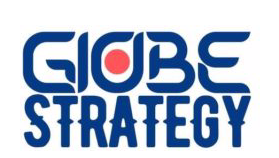The term electronic business (commonly referred to as E-business or e-business) is sometimes used interchangeably with e-commerce. In fact, e-business encompasses a broader definition that includes not only e-commerce, but customer relationship management (CRM), business partnerships, e-learning, and electronic transactions within an organization.
Electronic-business methods enable companies to link their internal and external data-processing systems more efficiently and flexibly, to work more closely with suppliers and partners, and to better satisfy the needs and expectations of customers. In practice, e-business is more than just e-commerce. While e-business refers to a strategic focus with an emphasis on the functions that occur using electronic capabilities, e-commerce is a subset of an overall e-business strategy.
E-Business Process
E-business involves business processes that span the entire value chain: electronic purchasing and supply-chain management, electronic order processing, customer service, and business partner collaboration. Special technical standards for e-business facilitate the exchange of data between companies. E-business software allows the integration of intrafirm and interfirm business processes. E-business can be conducted using the Internet, intranets, extranets, or some combination of these.

In the emerging global economy, e-commerce and e-business have become increasingly necessary components of business strategy and strong catalysts for economic development. The integration of information and communications technology (ICT) in business has revolutionized relationships within organizations and those among organizations and individuals. Specifically, the use of ICT in business has enhanced productivity, encouraged greater customer participation, and enabled mass customization.
Advantages of E-Commerce
E-business enhances three primary processes:
- Production processes including procurement, ordering and replenishment of stocks; processing of payments; electronic access to suppliers; and production control processes
- Customer-focused processes including promotional and marketing efforts, Internet sales, customer purchase orders and payments, and customer support
- Internal management processes including employee services, training, internal information-sharing, videoconferencing, and recruiting. Electronic applications enhance information flow between production and sales forces to improve sales-force productivity. ICT improves the efficiency of work-group communications and electronic publishing of internal business information.
Source: Boundless. “Global Strategy.” Boundless Management. Boundless, 17 Nov. 2014. Retrieved 07 Feb. 2015 from https://www.boundless.com/management/textbooks/boundless-management-textbook/strategic-management-12/common-types-of-corporate-strategies-90/global-strategy-436-1455/
